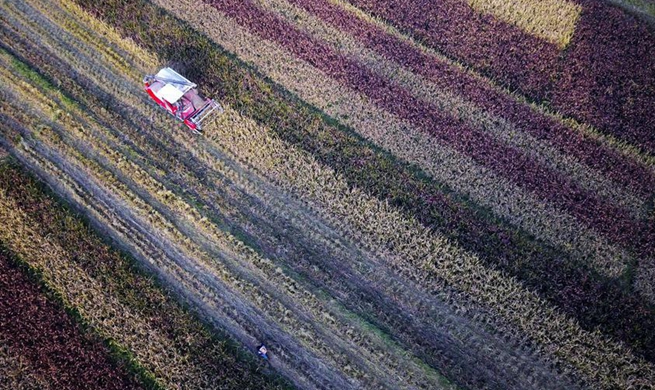SANTIAGO DE CUBA, Oct. 30 (Xinhua) -- Cuba's government hopes to revive the country's once-thriving coffee industry by offering attractive wages in harvest season and replanting old plantations with low yields.
For each two-kilogram can of picked coffee cherries, pickers earn 161 Cuban pesos (CUP), or 6.1 U.S. dollars, for the arabica variety and 107 CUP (4 dollars) for the robusta, both of which are cultivated in Cuba's mountainous regions.
"During the harvest, every worker earns an average monthly salary of 6,000 CUP (226 dollars), which contributes to increasing quality and efficiency, and spurs personnel to make a bigger effort to earn more," said Victor Zaldivar, manager of the Coffee and Cocoa Processing Center in Tercer Frente, in eastern Santiago de Cuba Province, home to the largest production area of coffee in the country.
In 2016, many workers earned over 100,000 CUP (3,774 dollars) annually, which raised living standards and improved housing in the area, and slowed the exodus to the cities, said Zaldivar.
Employees of state-owned companies usually earn only about 20 dollars a month on average, far from enough to deal with the rising living costs, especially in the western provinces.
"With larger personal incomes, people here are building and renovating their homes, and improving the material and spiritual welfare of their families, and the social well-being of the municipality," Zaldivar said.
Today, in remote areas of the Sierra Maestra Mountains, it's not unusual to find spacious and well-built modern homes equipped with all manner of appliances, a sign of the economic changes taking place.
Local resident Yamile Sosa, 21, has been working as a coffee picker. Workers like herself are highly motivated by the rising wages, "that's why this year more coffee has been harvested," she said.
The 2013-2014 harvest season yielded 6,211 tons of coffee, well below target, mostly due to devastation caused by Hurricane Sandy in October 2012. But the damage led the government to replant old plantations, many of which were 25 to 30 years old.
Since a coffee bush needs four years to mature, renewed plantations should begin to bear fruit this 2017-2018 harvest season.
Yield has grown from 1.66 tons per 13.42-hectare parcel of land to 3.91 tons, and the goal is to reach 4.6 tons by 2020.
Cuba enjoyed international fame for 160 years as a producer and exporter of one of the world's best coffees, planting as much as 194,000 hectares of the crop.
The plan now is to produce at least 15,000 tons a year, still far from the 24,000 tons needed to meet domestic demand and forgo the 8,000 tons imported annually from Vietnam, but it's a start.

















